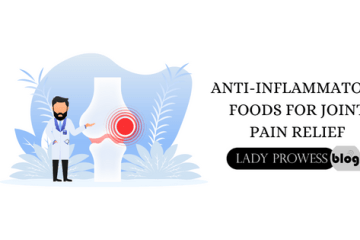The 6 impacts of technology on health and wellness
Discover the transformative impact of technology on health and wellness. Learn how technology has revolutionized healthcare practices, improved patient outcomes, and fostered a proactive approach to wellness.
Technology has revolutionized the healthcare landscape, bringing about significant advancements in health and wellness. From providing access to information and enabling telemedicine to the rise of wearable devices and mobile applications, technology has empowered individuals to take control of their health like never before.
This article explores the transformative impact of technology on health and wellness, highlighting its influence on access to information, remote care, health tracking, mobile applications, big data analytics, and virtual reality. By harnessing the power of technology, individuals can lead healthier lives, make informed decisions, and actively participate in their well-being.
Read More: Stress Management Techniques for a healthy mind and Body.
Relationship Between Technology and Health
Technology and health are deeply intertwined, with technology playing a crucial role in improving healthcare outcomes, enhancing patient experiences, and driving advancements in medical research. Here are some key aspects of the relationship between technology and health:
Medical Diagnosis and Treatment
Technological advancements have significantly improved medical diagnosis and treatment options. Advanced imaging technologies, such as MRI and CT scans, provide detailed body images, aiding in accurate diagnoses. Minimally invasive surgical techniques, enabled by robotics and precision instruments, reduce patient trauma and recovery time. Additionally, medical devices and implants, such as pacemakers and prosthetics, enhance the quality of life for individuals with various health conditions.
Electronic Health Records (EHRs)
The transition from paper-based medical records to electronic health records has transformed healthcare delivery. EHRs allow for the seamless sharing of patient information among healthcare providers, reducing medical errors and improving continuity of care. They also facilitate data analysis, enabling healthcare professionals to identify trends, conduct research, and make evidence-based decisions.
Health Monitoring and Wearable Devices
Wearable devices, including fitness trackers, smartwatches, and medical sensors, enable individuals to monitor various health parameters in real-time. These devices track heart rate, sleep patterns, physical activity, and other vital signs, promoting self-awareness and encouraging healthy behaviors. They also provide valuable data to healthcare professionals, aiding in preventive care and early intervention.
Telemedicine and Remote Healthcare
Telemedicine has revolutionized healthcare access, particularly in remote or underserved areas. Through video consultations, patients can receive medical advice, diagnoses, and prescriptions from healthcare professionals without needing in-person visits. Telemedicine has proven especially valuable during times of crisis, enabling remote healthcare delivery and minimizing the spread of infectious diseases.
Health Information and Education
The internet and digital platforms have democratized access to health information. Patients can research symptoms, medications, treatment options, and self-care practices from trusted sources. Online health communities and forums also provide a platform for individuals to share experiences and seek support, fostering a sense of empowerment and community.
Artificial Intelligence and Data Analytics
Artificial intelligence (AI) and data analytics have transformed healthcare research, diagnosis, and treatment. Machine learning algorithms can analyze large datasets, identify patterns and predict outcomes. AI-powered diagnostic tools assist in medical imaging interpretation, leading to faster and more accurate diagnoses. Data analytics also contribute to population health management, enabling healthcare providers to identify public health trends and allocate resources effectively.
Health Apps and Digital Health Solutions
Mobile applications focused on health and wellness have increased, offering features such as medication reminders, fitness programs, nutrition trackers, mental health support, and virtual therapy. These apps provide personalized guidance, promote self-care, and empower individuals to manage their health actively.
Genetic and Precision Medicine
Technological advancements have revolutionized genetic research and the field of precision medicine. High-throughput DNA sequencing and genomic analysis enable personalized treatment plans tailored to an individual’s genetic makeup, increasing treatment effectiveness and reducing adverse reactions.
What is the impact of technology on health and wellness
The impact of technology on health and wellness has been significant, transforming various aspects of healthcare and empowering individuals to take control of their well-being. Here are some key impacts of technology on health and wellness:
Access to Information
One of the most notable impacts of technology on health and wellness is the ease of access to information. The internet has become a vast repository of health-related knowledge, allowing individuals to research symptoms, diseases, treatments, and healthy lifestyle choices.
Websites, online health portals, and reputable sources provide comprehensive information, enabling people to educate themselves about various health conditions and make informed decisions. This access to information promotes health literacy, empowering individuals to understand their health and engage in proactive measures for disease prevention.
Telemedicine and Remote Care
The emergence of telemedicine has transformed how healthcare is delivered, particularly in remote areas or for individuals with limited mobility. Telemedicine enables patients to consult with healthcare professionals remotely, utilizing video conferencing and other digital communication tools. This technology has improved access to healthcare services, reduced travel and waiting times, and facilitated early detection and intervention. Patients can receive medical consultations, diagnoses, and even treatments without leaving their homes, enhancing convenience and reducing barriers to care.
Wearable Devices and Health Tracking
The advent of wearable devices, such as fitness trackers and smartwatches, has revolutionized health tracking and monitoring. These devices can measure vital signs, track physical activity, monitor sleep patterns, and provide real-time feedback on various health metrics. Wearable technology empowers individuals to take charge of their fitness goals, encouraging them to exercise regularly, maintain healthy sleep patterns, and monitor their overall well-being. These devices are constant reminders to adopt healthy habits and allow users to track their progress toward wellness goals.
Mobile Applications
Mobile applications have emerged as powerful tools for health and wellness. From medication reminders to fitness programs and nutrition trackers, these apps offer a range of features that promote healthy behaviors and provide personalized guidance. Users can access a wealth of information, track their physical activity, monitor their diet, and even receive mental health support. Mobile apps encourage individuals to adopt healthier habits, provide motivation and accountability, and enable them to manage their well-being daily actively.
Big Data and Analytics
The collection and analysis of large-scale health data have revolutionized healthcare practices. Big data analytics allow healthcare professionals to identify trends, patterns, and risk factors contributing to disease prevention, early detection, and personalized treatment plans. By harnessing the power of data, healthcare providers can make evidence-based decisions, optimize healthcare delivery, and improve patient outcomes. Integrating electronic health records, genomic data, and population health information has paved the way for a more proactive and personalized approach to healthcare.
Virtual Reality (VR) and Augmented Reality (AR)
Virtual Reality (VR) and Augmented Reality (AR) technologies have applications in various healthcare settings, enhancing patient experiences and improving outcomes. VR can be used for pain management, allowing patients to immerse themselves in virtual environments that distract from discomfort and facilitate relaxation. AR is employed in surgical training, providing surgeons with real-time visual guidance and enhancing precision during complex procedures. These immersive technologies also have potential applications in mental health therapy, enabling individuals to engage in simulated environments that aid in stress reduction, exposure therapy, and mindfulness exercises.
Summary
Technology has had a transformative impact on health and wellness, empowering individuals to participate in their well-being actively. Technology has revolutionized healthcare practices and improved patient outcomes through access to information, telemedicine, wearable devices, mobile applications, big data analytics, and virtual reality. The seamless integration of technology into healthcare delivery has enhanced access to care, promoted healthy behaviors, enabled personalized interventions, and facilitated proactive health management. As technology continues to evolve, it promises further advancements in health and wellness, empowering individuals to lead healthier, more informed lives.



0 Comments